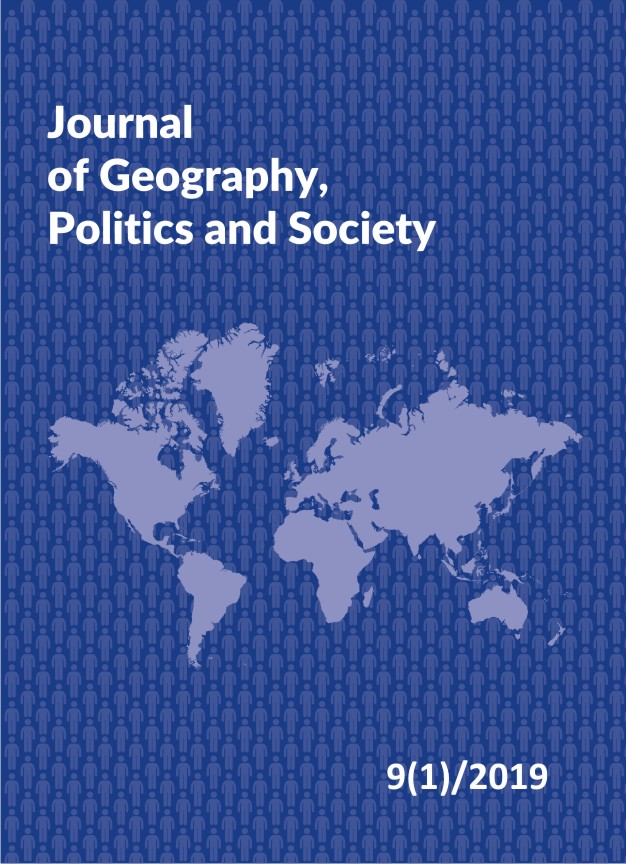Theoretical and practical aspects of regeneration of decommissioned industrial areas in Oradea, Romania
DOI:
https://doi.org/10.26881/jpgs.2019.1.05Keywords:
urban regeneration, renewal, industrial sites, urban development, RomaniaAbstract
Urban regeneration is known to be an experienced but complex phenomenon. Even though, over the years, urban regeneration, in Europe, has been widely used, but in Romania, the concept is still new, many formal industrial spaces are abandoned and there is a lack of interest in bringing these areas back to life. The aim of this paper is to study the concept of urban regeneration, figure out the practical aspects of it and observing the current situation of sites in the city of Oradea, Romania.
Downloads
References
Chaline C., 1999, La Regeneration Urbaine (Eng. Urban Regeneration), Presses Universitaires de France, Paris.
Couch C, 1990, Urban Renewal. Theory and practice, Macmillan Education, London.
Guillem. P. C., 2013, La renovación urbana y su régimen jurídico (Eng. Urban regeneration and it’s legal regime), Reus, Madrid. http://moara-rasarit.ro/spatii-disponibile/ (accessed 25 April 2018).
Lakatoş A.E, 2017, Conversia în context. Despre regenerarea spaţiilor industriale (Eng. Conversion into context. About the regeneration of industrial spaces), Editura Fundatiei Arhitext design, Bucuresti.
Ministerul Dezvoltării Regionale și Administrației Publice. Direcția Generală Dezvoltare Regională și Infrastructură, Metodologie de intervenție privind regenerarea urbană pentru anumite tipuri de teritorii, (Eng Ministry of Regional Development and Public Administration. General, Regional Development and Infrastructure, Intervention Methodology on Urban Regeneration for Certain Types of Territories), 2015.
Nae, M., 2015, Regenerarea și reconversia teritoriilor (Eng. Regeneration and conversion of territories), Editura Universitară, București.
ORDONANŢĂ nr. 27 din 27 august 2008 pentru modificarea şi completarea Legii nr. 350/2001 privind amenajarea teritoriului şi urbanismul (Eng. No 27 Ordinance, 27th of August for amending and completing the Law no. 350/2001 concerning landscaping and urban planning, 2008, https://www.oar-bucuresti.ro/legislatie/2008/ORDONANTA_27_din_27_aug_2008_modif_si_complet_lg_350.pdf (accessed 28 November 2017).
Planul integrat de dezvoltare al municipiului Oradea (Eng. Integrated Development Plan of Oradea),2014, http://www.oradea.ro/fisiere/module_fisiere/20681/PIDU%20FINAL%20FINAL%20cu%20completare.pdf (accessed 15 March 2017).
Reuniunea informală ministerială provind dezvoltarea urbană declaraţie. Toledo, 22 iune 2010 (Eng. Ministerial information meeting on urban development statement. Toledo, 22 June 2010), 2010, http://www.mdrap.ro/userfiles/declaratie_Toledo_ro.pdf (accessed 05 February 2018).
Strategia integrată de Dezvoltare Urbană a Municipiului Oradea 2017-2023 (Eng. Integrated Urban Development Strategy of Oradea City 2017–2023), 2017, www.oradea.ro/fisiere/module_fisiere/26163/SIDU%20Oradea.pdf (accessed 02 January 2019).
Sutherland M., Teller J., Tweed C., 2002, Learning perceptions and attitudes as a way of defining heritage built at affordable prices. Management and analysis of the local environment, SUIT Position Paper, 5. http://gaston.lema.arch.ulg.ac.be/research/Suit (accessed 15 April 2018).
Trifa, R. M., 2015, Structure, De-structure, Re-structure. The Second Life of Industrial Heritage, in Acta Technica Napocensis: Civil Engineering & Architecture, Volume 58, nr. 4, p. 48–55;
Weiss J., Tribe M., 2016, Routledge Handbook of Industry and Development, Routledge, London and New York.
http://moara-rasarit.ro/spatii-disponibile/Nae, M.2015, Regenerarea și reconversia teritoriilor, Editura Universitară, București.

 Academic Scientific Journals
Academic Scientific Journals




